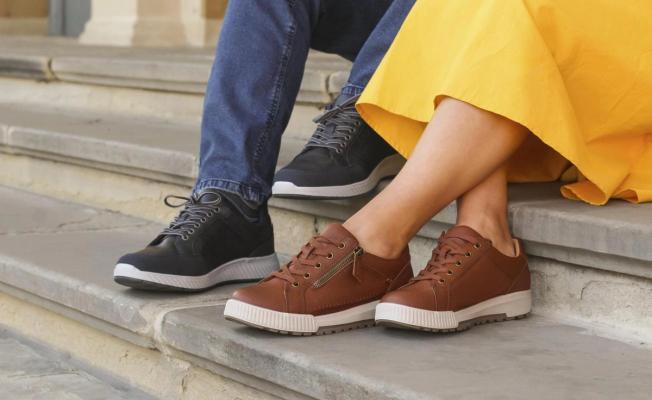
What Are the Best Shoes for Plantar Fasciitis?
4 July 2025
If you’ve ever felt sharp pain in your heel, especially first thing in the morning, you could be suffering from plantar fasciitis. This is one of the most common causes of foot discomfort and can have a noticeable impact on daily life if left untreated.
Luckily, though, the right footwear can often put the issue to bed. Choosing the right shoes can relieve pressure, reduce pain, and help you stay active and comfortable, whether it’s walking gently, hiking, standing up for long periods, or anything else.
In this guide, we’ll explore what plantar fasciitis is, why the right footwear matters, and what features to look for when shopping for plantar fasciitis-friendly shoes.
Here's what we'll cover:
- What plantar fasciitis is and why the right footwear is so important
- What shoe styles you should wear for plantar fasciitis
- The features to look for in shoes for plantar fasciitis
- Shoes to avoid when you have plantar fasciitis
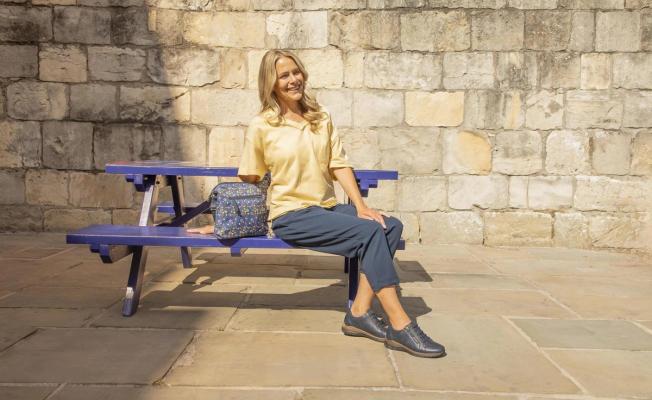
What Is Plantar Fasciitis and Why Is the Right Footwear So Important?
Plantar fasciitis is a common foot condition that causes pain in the heels of your feet.
First, let’s introduce the plantar fascia. This is a thick band of tissue running along the bottom of your foot, from your heel to your toes, that gives structure and support when you walk. If you flex your foot and press into the arch, you’ll feel it. And most of the time you won’t notice it at all - until it becomes inflamed, that is.
Plantar fasciitis is the name for this inflammation. It happens when the tissue becomes irritated or overstretched, often causing stabbing or burning pain in the heel. For some people, this pain can also travel into the midfoot or arch area, more likely after long periods of standing or when taking the first few steps in the morning.
This condition is common among people who spend long periods on their feet, especially if they wear unsupportive footwear or shoes that don’t fit properly. Other common triggers include consistently wearing flat shoes, sudden increases in physical activity, tight calf muscles, and having either high arches or flat feet.
How To Treat Plantar Fasciitis
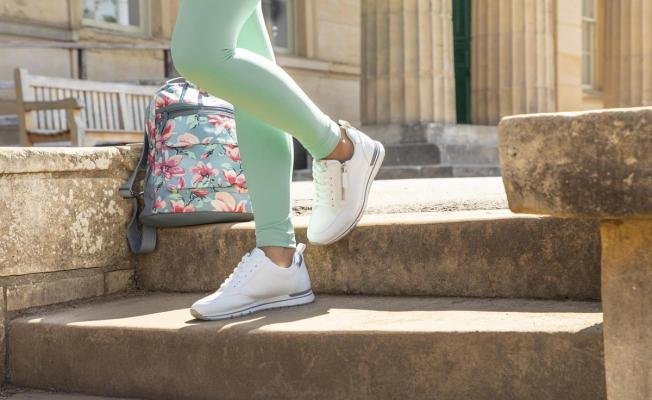
If left untreated, plantar fasciitis can become chronic and more difficult to manage. Doctors often recommend starting with non-invasive treatments like stretching, rest, ice, and, most importantly, proper footwear.
This is why choosing the right shoes is often the first and most effective step in relieving symptoms. Shoes that lack support or cushioning, think worn-out trainers, flip-flops, or thin-soled fashion shoes, can increase pressure on your feet and slow down recovery. Well-structured footwear that supports your arches, absorbs shock, and promotes natural alignment can make a real positive impact.
With that in mind, let’s look at the best shoes to wear when you’re suffering from the condition.
What Shoes Should You Wear for Plantar Fasciitis?
If you're dealing with plantar fasciitis, look for shoes that are specifically designed for comfort and support. Options like cushioned trainers, orthopaedic sandals, or supportive walking shoes can help relieve symptoms and prevent them from getting worse.
Styles with contoured footbeds, adjustable straps, and shock-absorbing soles are especially good options.
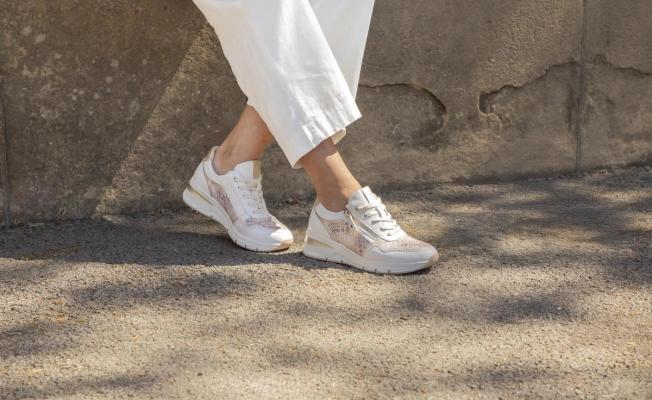
Features to Look for in Shoes for Plantar Fasciitis
Before you buy a new pair of shoes, here are the things you should keep an eye out for. Each one plays a role in relieving pain and preventing flare-ups.
1. Arch Support
Strong arch support is one of the most important features in shoes for plantar fasciitis. It helps distribute pressure more evenly across the foot, reducing strain on the plantar fascia. Shoes with built-in arch support for women and men, or contoured insoles, can ease discomfort and improve posture. Getting additional arch support is particularly important if you’re looking for comfortable shoes for work.
2. Cushioned Insoles
A cushioned insole provides extra padding to absorb the impact of each step. This is particularly useful if you're walking on hard surfaces. Look for memory foam insole shoes or gel insoles to help reduce shock and keep your heel supported throughout the day.
3. Firm Heel Counters
A firm heel counter (the part of the shoe that wraps around your heel) helps to stabilise the foot and prevent it from moving excessively. This added stability reduces stress on the plantar fascia and keeps your gait aligned.
4. Rocker Soles or Slight Heel Lift
Shoes with rocker soles or a slight heel lift promote a more natural walking motion and take pressure off the heel. These designs help reduce tension in the arch and can be especially helpful if you’re on your feet all day.
5. Wide Fit Options
If your feet tend to swell or you have wider feet, a wide-fit shoe can reduce pressure and improve alignment. Extra space around the toes can also help reduce friction and allow natural foot movement.
6. Removable Insoles or Orthotic-Friendly Design
Having the option to insert your own orthotics is highly recommended. Removable insoles make it easy to customise your level of support, especially if you’ve been prescribed specific inserts by a podiatrist.
7. Breathable, Lightweight Materials
Shoes made from breathable fabrics like mesh or perforated leather help keep feet cool and reduce fatigue. Lightweight shoe materials also prevent added strain while walking or standing for long periods.
What Shoes Should You Avoid with Plantar Fasciitis?
While finding the right shoes is important, it’s just as important to know which styles to avoid. Shoes with flat soles, no arch support, or poor cushioning can make plantar fasciitis worse, especially during a flare-up.
Styles like ballet flats, flip-flops, high heels, or overly flexible shoes often lack the structure needed to support your foot properly. Wearing these types of shoes regularly can increase your risk of pain and prolong recovery.
And don’t worry, you probably won’t need to avoid them forever, just limit their use during recovery. Once your plantar fasciitis symptoms have settled down and your podiatrist or doctor gives the go-ahead, you can most likely reintroduce them, at least for short periods or special occasions.
As a general rule, if your feet feel sore, tired, or tender after wearing a certain pair of shoes, it's a sign that your plantar fascia may not be ready for them yet. If you notice pain or tightness in your heel when you first wake up, or discomfort that worsens throughout the day, we recommend switching back to more supportive footwear until things settle again.
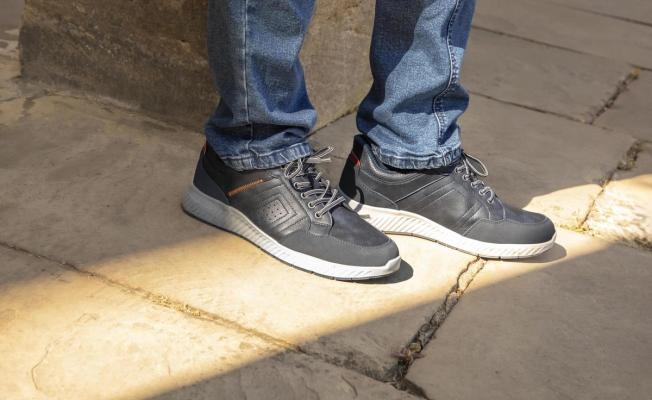
Finding the Best Shoes to Help with Plantar Fasciitis
Choosing the best shoes for plantar fasciitis means prioritising support, cushioning, and fit. When you get the right pair, you’ll notice a dramatic reduction in pain, a smoother recovery, and more comfort throughout the day.
Whether you’re looking for arch support, heel cushioning, or just a more forgiving fit, we can connect you with a comfortable, stylish pair that fits your needs. Take a look at our curated collections to find your new pair.
